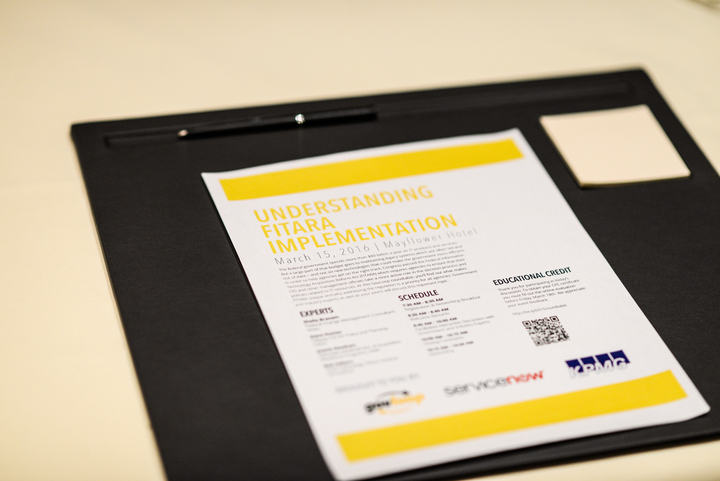For some background information on FITARA, please view an earlier post, here.
We’ve talked about the need for better collaboration and coordination around government IT for a long time. Until recently, most agencies utilized legacy systems that were unable to keep up with the high demand for better performance and agility in the services they provide. Procurement processes were arduous and data remained siloed. But thankfully, the Federal Information Technology Acquisition Reform Act (FITARA) has mandated and allowed agencies to fix these gaps through better communication and coordination efforts.
FITARA experts and enthusiasts came together at GovLoop’s recent roundtable, Understanding FITARA Implementation, to discuss the success of FITARA as an enterprise and some of the challenges we still face. Our panel of experts included:
- Sheila Branam, Federal Change Management Consultant at KPMG
- Joyce Hunter, Deputy CIO for Policy Planning at the U.S. Department of Agriculture
- Joanie Newhart, Associate Administrator of Acquisition Workforce Programs at the Office of Management and Budget
- Bob Osborn, Chief Technology Officer-Federal at ServiceNow
A few themes emerged from the discussion: collaboration and coordination, siloes and procurement, and leadership/organizational culture.
Collaboration and Coordination
FITARA came from a need to better collaborate and coordinate the use and procurement of IT.
FITARA helps bring everyone to the decision-making table. Hunter shared that USDA already had a communication infrastructure in place internally, but that CIOs were still not as involved in the overall process as they should be. Now, USDA holds a monthly executive board meeting, which consists of members such as CIOs, Chief Acquisition Officers, and Chief Financial Officers to talk about investments. Such actions help bridge the communication gap between necessary stakeholders.
Collaboration also requires shared knowledge. In other words, the news about what is already owned, what works or doesn’t, and what the agency needs to further procure needs to spread to all internal stakeholders. “A big part of FITARA is the inventory part. CIOs should have an overarching knowledge of what action is going on in their agency,” Newhart said. Additionally, Hunter said, you can better your cybersecurity when everybody knows what the investments are.
Agencies also need to ensure that all of their workers are on the same page about why and how FITARA is important to their overarching mission. Hunter observed that many CIOs are already onboard with FITARA, but “we haven’t gotten low enough. It stops at the CIOs. It is incumbent on IT to reach out to others to have this clear understanding.”
Siloes and Procurement
FITARA is also making headway in breaking down government technology siloes.
Previously, agencies held information in multiple systems, which could only be retrieved through multiple data calls. That process no longer works, according to Hunter. “IT is now integrated in everything. It’s an enabler,” she said.
Through FITARA agencies now have the ability to make more informed decisions on procurement. After opening communication and collaboration avenues, Newhart suggested agencies look into buying in a more modular manner, which may help them better prioritize purchases. This can lead to cost-savings in the end. Branam shared that agencies should also see where they can consolidate applications to approach purchases in small pieces. Ultimately, “the desired outcome of FITARA is the delivery of citizen services in the most efficient way- at the lowest cost possible,” Osborn said.
Leadership/Organizational Culture: Enterprise Architecture
But, agencies should be prepared for resistance.
To make FITARA work in your agency, you first need a sense of the organizational culture, Branam said. “Get a sense of the coalition of the willing and don’t neglect the resisters of change.” She advised everyone to truly incorporate all players throughout the process. Address the resisters’ concerns and be communicative. “The more people you have at the table, the better. It may slow the process down, but it is worthwhile in the long run,” she said.
Additionally, there needs to be strong leadership support to make the most out of FITARA. However, leaders should incorporate FITARA’s practices in a way that compliments employees’ day-to-day business and processes. Otherwise, Osborn warned, the momentum may die when those advocates leave the system.
FITARA is here to stay. “FITARA is an IT piece of legislation, but more importantly, it is for everyone,” Branam said.
“FITARA talks about an end state agencies should shoot for,” Osborn concluded. As such, it is up to good leadership to support FITARA and the move forward. In turn, agencies need to address the organizational change that is bound to happen through proper communication.
 |
|





Leave a Reply
You must be logged in to post a comment.